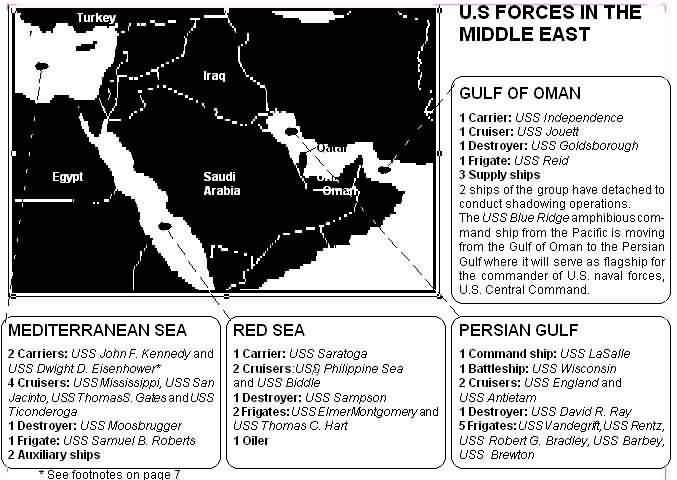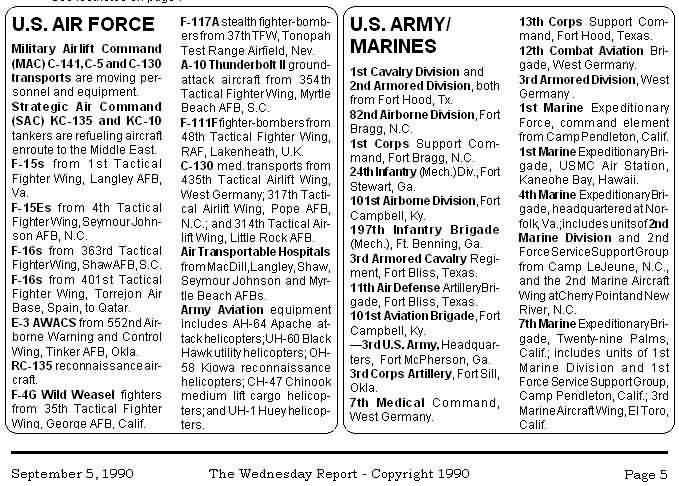![]()
![]() Home | Back to TWR Index | Email | The
Editor | History | Gulf War
Index
Home | Back to TWR Index | Email | The
Editor | History | Gulf War
Index
In this issue: U.S. Armed Forces in The Middle East — Assault Force or Defensive Action?

![]()
Vol 4, Number 36 September 5, 1990
Regrettably, our Minister of Indian Affairs after repeatedly declaring he would not negotiate with a gun to his head, stood in front of an armed, masked, criminal dressed in battle fatigues and with pomp and ceremony, apparently signed a deal for the thug. That one armed "warrior" standing behind Thomas Siddon on the nation's TV screens may have become a beacon to every rowdy and terrorist who dreams of such power. That scene alone could make one pine for the days when a left-leaning Liberal Prime Minister had the guts to invoke martial law at the first sign of trouble.
How the hell could a gang of masked, misguided hooligans with automatic weapons run this country ragged for six whole weeks?
Manipulating the already restless indigenous peoples of the Oka area reservations, triggering nationwide civil disobedience and disrupting the lives of millions of Canadians, the so-called Mohawk "warriors" holed up in "The Pines" of the Kanasetake reserve in southern Quebec are criminals. They were indisputably lawbreakers committing summary offenses from the first minute that each member acquired prohibited weapons. Their use of those weapons against peace officers constituted not only an indictable criminal offense, but outright "armed rebellion" against the civil power. Their repeated urgings for nationwide action against civil powers, violating anti-sedition sections of the Criminal Code, put them in further contravention of Canadian law.
Both the Quebec and federal governments were ungraciously overtaken by an armed rebellion in Oka while the unprofessional handling of events by the Sureté de Quebec, a police force seemingly mindless of authority, brought further disgrace and generated an undying tension within the region.
The slow reaction of both the federal and Quebec governments has cost the country dearly. Now pending is further erosion of Canadian unity, civil disobedience, armed rebellion and disruption of law and order. The hurt that has been brought to the victimized local people whose emotions and lives were swept into this prolonged ordeal is felt across the country and around the world. Their lives have been affected indelibly.
Comment:
LESSONS FROM OKA
A CAF peacekeeping solution to the Oka crisis was the only solution. CAF troops should have been summoned the moment trouble began, just as past Canadian Prime Ministers have sent our troops as peacekeepers to some of the hottest spots in the world: the Suez, Cypress, Viet Nam, Iran/Iraq, and others.
Blaming `racism' for the frustration of the Mohawk people and their neighbouring communities of Quebecers, all of whom have been pushed to their wits' end, is a cop out. Procrastination by two levels of government is truly at fault.
The protracted affair has allowed time for the region to draw every kind of outsider including: troublemakers and hoodlums who have brought more than a little undeserved disgrace to the locals, third-rate `wanna-be' reporters whose sometimes hysterical reporting and persistent quizzing of anyone with a feather has heightened anxieties, me-too Indian Chiefs (of which there seem to be more of than Indians), lawyers, politicians, and hordes of disgruntled SQ officers — all of whom have contributed deliberately or unwittingly to the creation of a seemingly hopeless mess by the time the military was mandated to restore the peace and return the area to normalcy.

